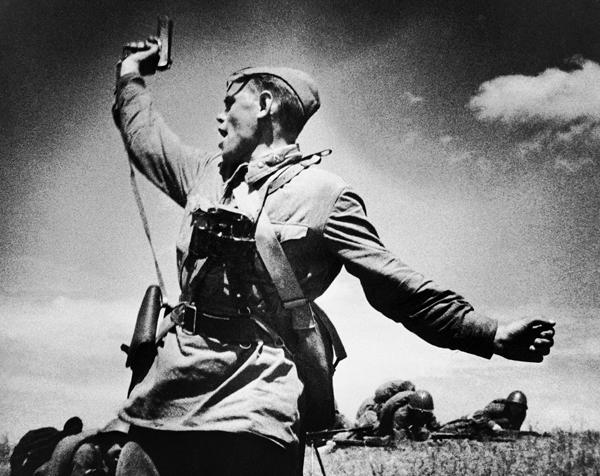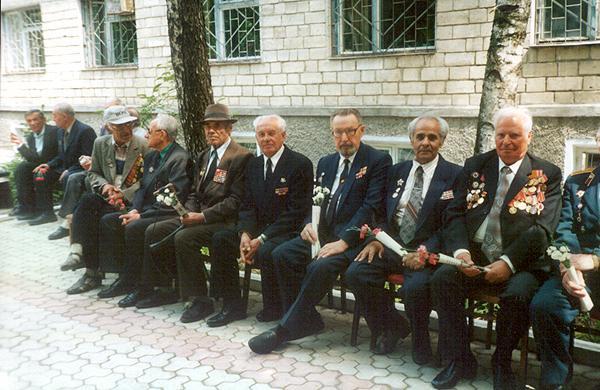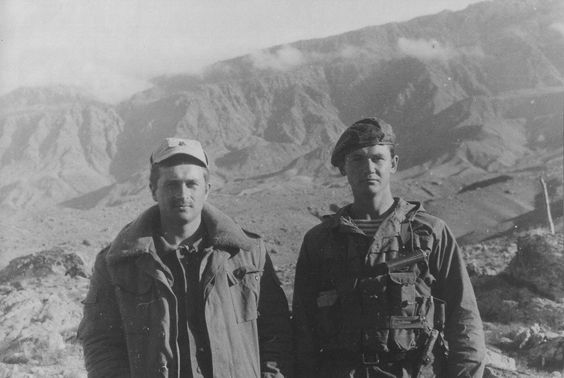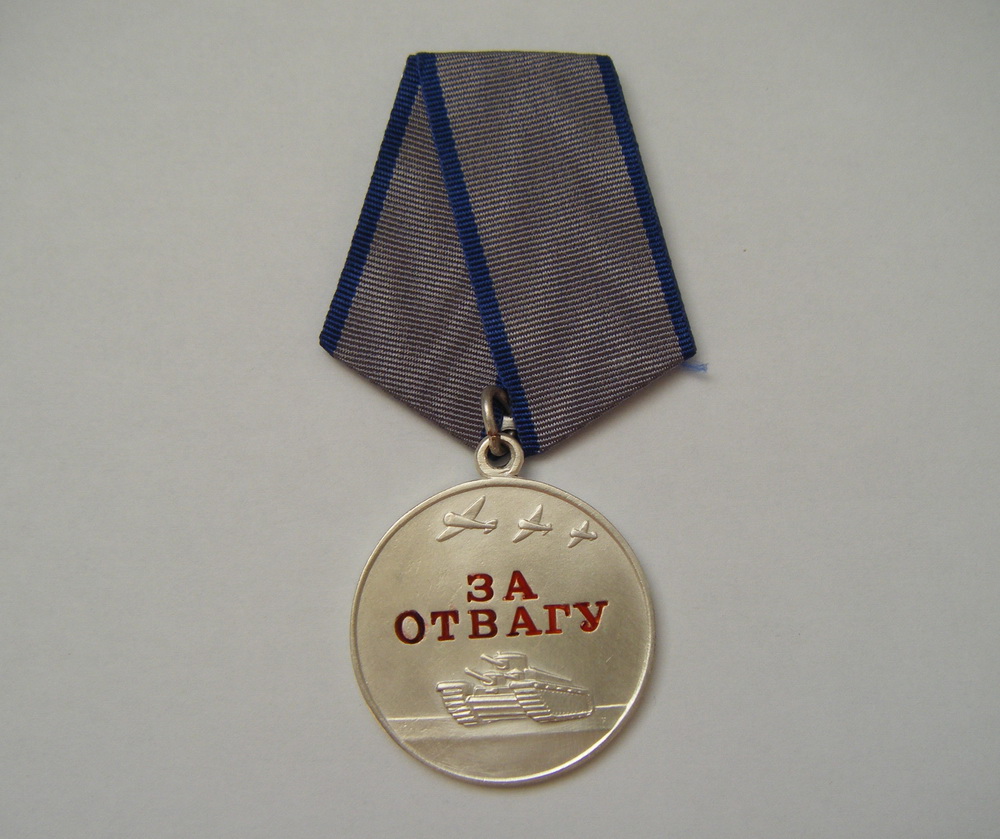The USSR State Prize System played a particularly important role in the formation and development of the country. She encouraged and stimulated Soviet people of various professions and labor to achieve the best, and sometimes impossible results for the benefit of the Fatherland. About 20 orders and 51 medals were established in the Soviet Union. The distinctions were awarded in all areas: for achievements in science and technology, for achievements in construction and economy, for differences in public and state activities, for the strengthening and defense of the state.
Of course, each medal and order deserve special attention, but in this article we will talk about the medal "For Courage" of the USSR, established shortly before the start of World War II. She was one of those medals counted by millions.
The status of the medal "For Courage"
A special medal was approved on October 17, 1938 by a decree of the Presidium of the Supreme Soviet of the USSR. And according to the established Regulation on the medal, sailors, soldiers, sergeants, officers of the army, border troops and the navy were presented for the award. The reason for the award was the personal courage, stamina and courage of an individual in the fight against enemies of the Soviet Union, saboteurs and enemy spies, as well as special military differences in protecting state lines and completing special tasks.
The medal "For Courage" was highly revered by the military almost from the first days of its formation. And during the Second World War, its value increased even more. Awarded with the military medal “For Courage” were to be a model of courage and be a worthy example to follow for other compatriots. And one more important detail: persons who are not citizens of the USSR could be awarded a medal.
Due to the decision of the Presidium of the Armed Forces of 1941, the insignia after the death of the awarded fighter returned to the Presidium of the Council. But the certificate for the medal could be left in the family as a keepsake for future generations.

Sign Description
The first “For Courage” medal was a regular circle with a diameter of 37 mm. The surface of its sides was glossy, silver of the 925th test with a minimum amount of impurities was used. The weight of the medal was in the range of 25-27 grams. On the front side of the sign was the main image (message), on the back - the serial number of the award was minted. Through a special eye and a silver ring, the medal was attached to a plate covered with a red moire ribbon.
All figures and inscriptions on the award were highlighted in relief. On the obverse, at the top, three hovering planes are displayed, holding their course forward. Presumably, this is I-16. Under them, in large letters, the inscription “For Courage” is clearly displayed in two lines. Next, after it comes the image of the T-35 tank, the width of its pattern is 10 mm, and the length is 6 mm. And at the very bottom of the sign, along the edge, is the inscription "USSR".
The image of the tank was not chosen by chance. Before the war, it was considered the most powerful military equipment and was used only in special cases. At the medal, he was recognized to symbolize the power and invincibility of the Soviet people. Although later it was recognized as ineffective, but did not change the design. In general, the entire figure on the medal demonstrates a serious offensive character.
A little later, in 1943, some changes were made to the Regulations and the description of the medal “For Courage”.The medal was now attached to a pentagonal cup, covered with a gray moire ribbon with two blue stripes at the edges.

For courage and courage
Since the mid-30s of the last century, the international situation has noticeably worsened. The reinforced armament of Germany, the military operations of Italy in Ethiopia, the civil war in Spain, the clashes of Japan and China - the world is mired in political contradictions. The current situation prompted the Soviet government to take a number of measures to strengthen the country's defense capabilities. This could not but affect the state system of awards. At the beginning of 1938, the first Soviet medal was approved - “20 years of the Red Army”. And a little later two more medals were established, “For Courage” and “For Military Merit”.
At that turbulent time, fighters of the border, and not only, troops of the USSR already had some military clashes. Someone even noted participation in the Spanish Civil War. The military were killed and injured. The heroism shown in the defense of the Motherland and its interests had the need to be marked with the corresponding award badge. Honoring feats and courage duly in the future played an important role in the fight against fascism.

First awarded
The very first medal “For Courage” was awarded to Junior Lieutenant V. Abramkin in accordance with the adopted Decree of the Presidium of October 19, 1938. In the same decree in alphabetical order, following Abramkin, another 62 names were listed. Among them, Senior Lieutenant F. Alekseev, Lieutenant Safe B. Almaev, Senior Political Instructor I. Bochkarev and others.
The medals “For Courage” were awarded to F. Grigoriev and N. Gulyaev, servicemen of the border troops. Being in the night watch, they were near Lake Hassan, where they spotted a sabotage detachment that tried to cross the border of the Soviet Union. The border guards managed to stop them, opening fire to defeat, but they themselves were injured. A few days later, the defenders of the Motherland again had to defend the borders of the same lake. As a result, 1322 soldiers received the medal "For Courage".
Before the start of World War II, the military who took part in military clashes in the area of the Halkin-Gol River were presented for the award. Also in battles with the White Finns, for breaking the Mannerheim line and several fortified structures, many fighters were awarded medals. Of course, the nature of the war itself was very controversial, but the readiness for the self-sacrifice of Soviet soldiers could not be ignored. Until June 1941, 26 thousand people were awarded the distinction.
The medal was also remarkable in that everything could be presented for awarding, from a simple soldier to fighters of penal units, although they were deprived of their deserved titles and awards for the time of their punishment. Here, personal courage was honored on the battlefield.

Handing over
In the prewar years, the awarding of insignia took place in the Kremlin, the presentation was conducted by the Chairman of the Presidium of the Supreme Soviet of the USSR and his deputies. The first days of the war, the rewarding procedure was still preserved for some time, but gradually the number of people awarded was significantly increased, and arrival in the capital became difficult due to the general martial law. Then, by a decree of August 19, 1941, the presentation of awards began to be performed on behalf of the Supreme Council.
Presentation of the state award of the medal “For Courage” and other military insignia began to take place at the duty station. The right to be awarded was granted to the officers: commanders of regiments, divisions and brigades. In partisan detachments, the awarding was carried out by the commanders of these formations themselves. For the most part, the presentation of medals was carried out in full combat conditions, which only emphasized the importance of the accomplished feats and raised the general morale in the fight against enemy invaders.
If, for some reason, the awarded changed their place of service or went to hospitals and were evacuated, then the awards in any case overtook their heroes and the awarding was already carried out by the commanders of those military districts where they fell. It is known that some medals still find their owners. This is due to the fact that some orders were lost or incorrect information was entered in them, or even the awarded soldiers were considered dead.
In 1953, a new decree came into force “On the Order of the Presentation of Orders and Medals by the awarded Presidium of the Supreme Council of the USSR”. Now the solemn awarding of medals and orders of the military was carried out in military units, commissariats and other military institutions.

WWII period
The peaceful life of Soviet citizens was interrupted by a surprise attack by Nazi Germany in 1941. Bloody battles were deployed from the Black Sea to the Barents Sea. The treacherous invaders, having superiority in many respects, managed to take over part of the territories of the Soviet Union in the first period of the war. But they failed to realize their initial plans - the lightning defeat of the Red Army.
The courage and heroism shown by the Soviet people in the most difficult battles with the Nazi invaders took on a mass character. Heroic confrontation and defense of cities such as Sevastopol, Moscow, Stalingrad, Kiev, and on the brink of human capabilities, the defense of blocked Leningrad forever entered history. Of course, special attention was paid to the awarding of military personnel of the USSR.
The medal "For Courage" was in special honor among the front-line soldiers, because each of them had its own feat and its own story. It was impossible to get it just like that, sitting somewhere off to the side or in a warm place. To receive this highest award, it was necessary to "smell the gunpowder." And people "sniffed", and some more than once: ordinary privates, nurses, partisans, scouts, fighters of penal battalions.
The winner of the medal rose high in the eyes of others and relatives could rightfully be proud of him. The number of medals "For Courage" in the Second World War amounted to over 4 million characters. And it is fair to say that without the brave heroes of the Soviet people, victory would have been impossible.

Cavaliers of medals
As the story tells, some fighters managed to earn medals “For Courage” 3-4 times. We can distinguish such names as V. Babich, K. Buketov, N. Gromyko, I. Kratko, M. Marchenko, M. Osipov, A. Rudenko and many others. But some took a step further.
Cavaliers of 5 medals are:
- P. Gribkov is a scout.
- M. Zakharov is a sergeant-gunner.
- S. Zolnikov - Senior Sergeant.
- V. Ippolitova is a medical officer who carried hundreds of fighters from the battlefields.
Most distinguished himself S. Gretsov, a sergeant in the medical service, he became the owner of six medals "For Courage". The history of his heroic exploits deserves due recognition. A simple man from the collective farm, risking his life, in the open fire of the enemy carried out from the battlefield and helped wounded comrades. After his death, awards were granted to the Stary Oskol Museum of Local Lore.
In the post-war period, they continued to mark this distinction mainly with servicemen of the border services.
Benefits of the Medal For Courage
All holders of awards and medals were supposed to pay the corresponding benefits from the state. The provision on benefits (1938) for the medal “For Courage” established a monthly payment of 10 rubles. In addition, the recipients were entitled to free use of public transport. The document confirming the possibility of obtaining privileges was a special certificate. But on January 1, 1948, a new decision of the Presidium of the Armed Forces on the abolition of preferential payments to holders of award marks entered into force.
In 1955, the Minister of Defense of the USSR G. Zhukov petitioned for a partial restoration of cash benefits awarded for military feats.Along with other awards receiving the medal “For Courage”, he offered to pay 3 rubles each. The Presidium of the Central Committee considered this issue several times on the agenda, but in the end sent it for revision to the Ministry of Defense. A year later, G. Zhukov again appealed to the CPSU Central Committee with a new proposal for cash payments for the awarded front-line soldiers. But the final decision was postponed indefinitely, which literally meant rejection.

For Courage in Afghanistan
From 1979 until almost February 1989, Soviet troops took part in armed battles in the DRA. Fulfilling their international duty, they supported the Afghan army in resolving the country's internal problems. But the real state of affairs was not immediately revealed. The Soviet Union was drawn into a real war, the losses of which amounted to 15 thousand Soviet soldiers.
The Afghan war once again showed that Soviet soldiers worthily took over the baton of courage and military honor from their grandfathers and fathers. It was a time of tough battles and brave exploits. The defeat of the Mujahideen base in the province of Jauzjan, the defeat of opposition groups in the Nijrab gorge, the battle at the village of Shaest, the unequal battle and the death of the Soviet battalion near the Khazar River, the tragic death of the Maravar Company, operations “Trunk” and “Typhoon”.
The Afghan “For Courage” award was founded by a Decree of the Presidium of the Revolutionary Council in 1980. This award was awarded to servicemen who showed courage and courage in the fight against the enemies of the DRA. In addition, both foreign and civilians could receive this award. It was about foreign specialists of various profiles who contributed to the development of the state.

State award of Russia
The highest military medal of the USSR did not sink into oblivion and did not cease to be relevant after the collapse of the Union. Unlike other military awards of the Soviet period, this mark of distinction is today awarded to persons who have shown their heroism in carrying out state special tasks, official duties, while protecting the borders and interests of the Russian Federation.
The first awarded the Russian medal “For Courage” are participants in technical work on the sunken nuclear submarine Komsomolets. Prizes were awarded for the successful completion of tasks and for the courage shown in conditions of increased danger.
With the new date for the establishment of the medal “For Courage” (Presidential Decree of 1994), in the system of state awards of the Russian Federation, the appearance of the sign has not changed.
